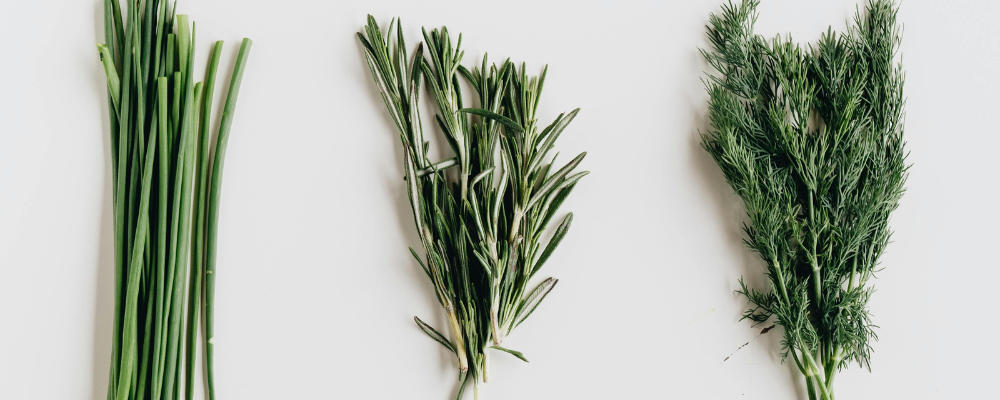
Using Fresh Herbs in Cooking
— By Kate Yerxa, MS, RD, Extension Professor University of Maine Cooperative Extension
Adding flavors to meals with fresh herbs is a great way to cut down on added sugar, salt and fat. While the recommendation to use herbs in cooking seems straightforward, there are a few questions that are commonly asked about the best way to use fresh herbs.
Do I need to wash fresh herbs?
Yes, fresh herbs need to be washed, after harvested and before you plan to use them. Wash fresh herbs under running water, shake dry (or use a salad spinner) and pat off any extra water with a clean towel.
How do I store fresh herbs?
Fresh, washed herbs should be stored in an open, perforated plastic bag in the crisper drawer of the refrigerator. Washed herbs can also be wrapped loosely in a damp paper towel and stored in an open, perforated plastic bag in the crisper drawer of the refrigerator. Fresh herbs can last approximately 2-3 days this way in the refrigerator.
Cut herbs can be stored in a jar or glass with about 1 inch of water, covered with a plastic bag and stored in the refrigerator. Change the water daily and herbs can last 5 to 7 days. Basil does not store well in the refrigerator, instead, store it at room temperature in a jar with water.
For information about preserving herbs, visit the Spoonful blog post 7 Ways to Best Preserve Spring Herbs.
When do I add fresh herbs to a recipe?
- Add more delicate herbs 1-2 minutes before the end of the cooking time or add them as a garnish before the dish is served. Delicate herbs include: basil, chives, cilantro, dill leaves, parsley and mint.
- Add less delicate herbs (oregano, rosemary and thyme) during the last 20 minutes of cooking.
How do I substitute dried herbs with fresh herbs in a recipe?
The rule of thumb when substituting fresh herbs for dried herbs in a recipe is to use three times as much of the fresh herbs as you would use of the dried herbs. For example: 1 teaspoon of dried herbs equals 1 tablespoon of fresh herbs.
What are common herb and food combinations?
Use the table below to give you some ideas about which herbs to try with different foods and mixed dishes.
| Herb | Food or Recipe |
| Basil | Tomatoes, fresh pesto, pasta sauce, peas and zucchini |
| Chives | Potatoes, tomatoes and dips |
| Cilantro | Tomatoes, salsas and in Mexican, Asian and Caribbean dishes |
| Dill | Carrots, cottage cheese, fish, green beans, potatoes and tomatoes |
| Mint | Carrots, peas, tea, fruit salads and tabbouleh |
| Oregano | Pepper and tomatoes |
| Parsley (Flat leaf) | Potato salad, tabbouleh and egg salad sandwiches |
| Rosemary | Tomatoes, chicken, fish, lamb, pork, roasted potatoes, soups and stews |
| Thyme | Eggs, potatoes, poultry, summer squash and tomatoes |
